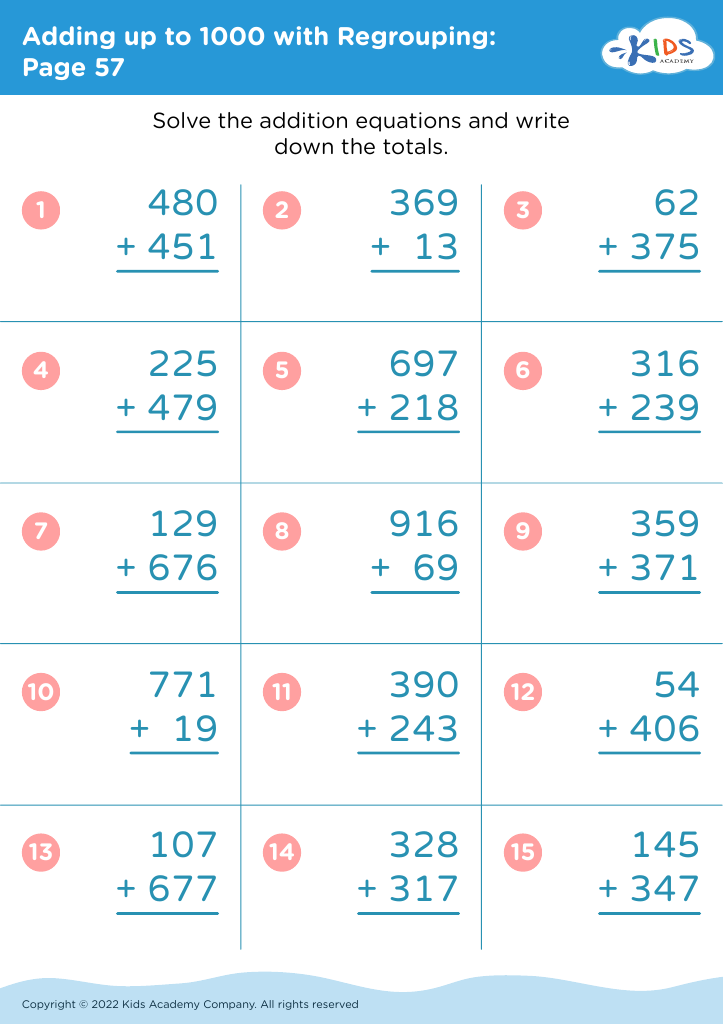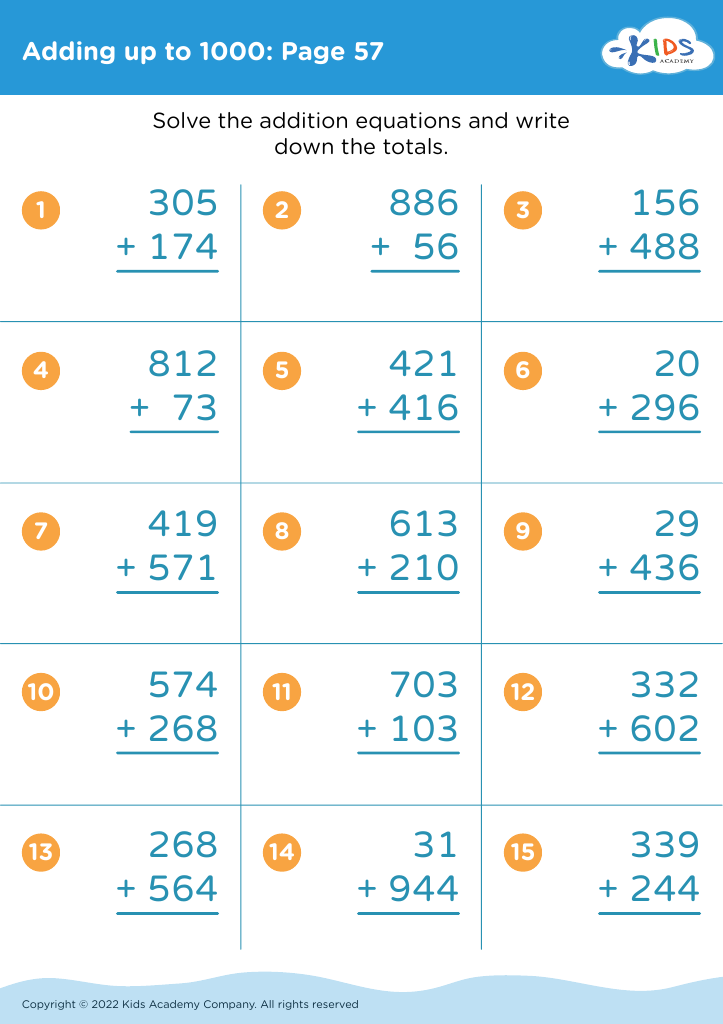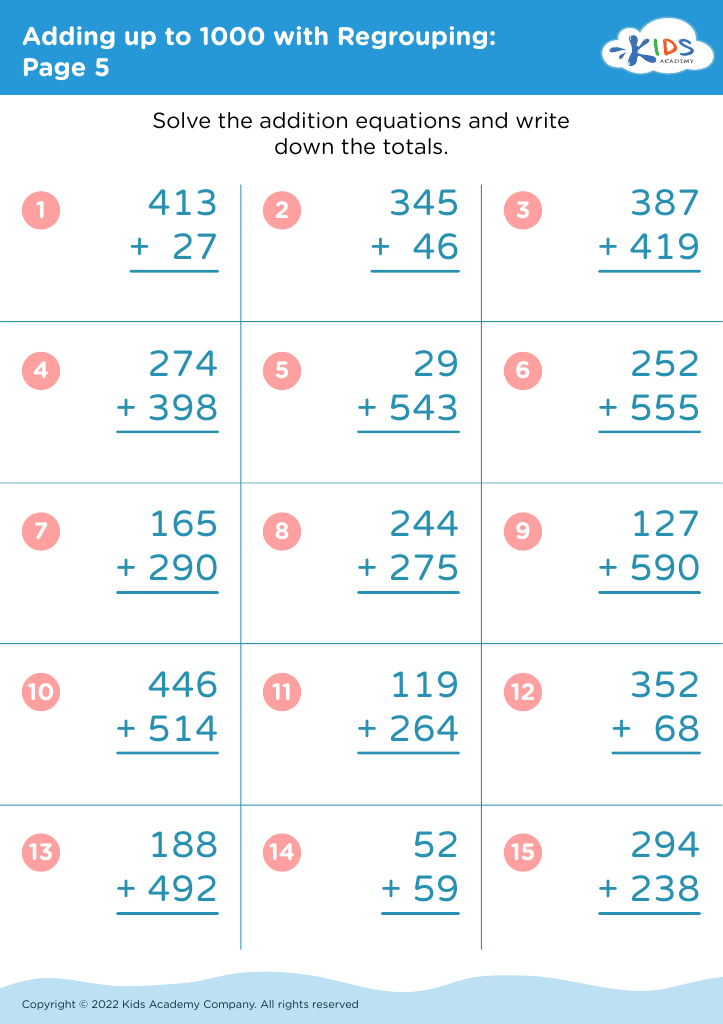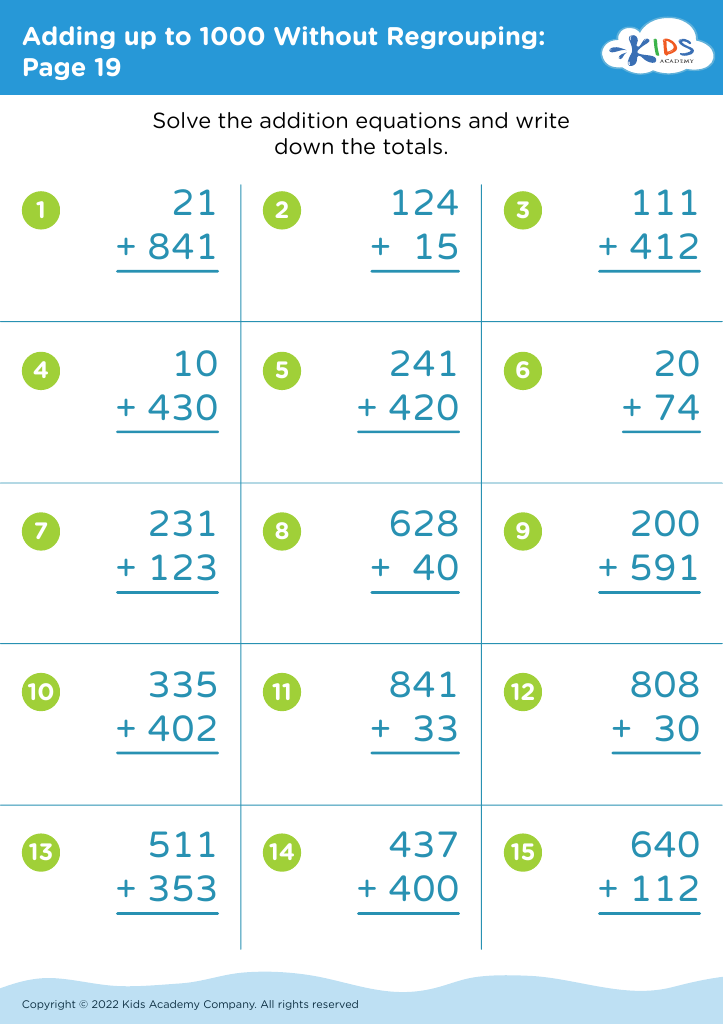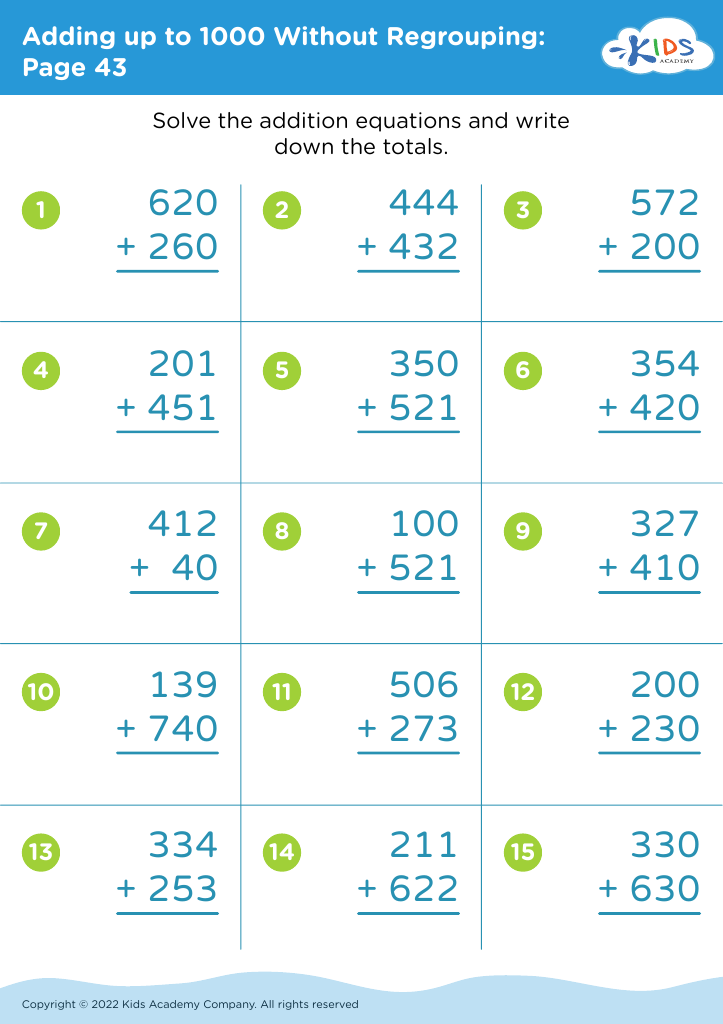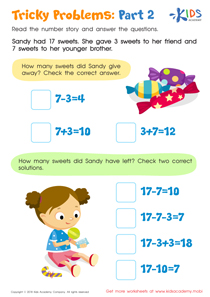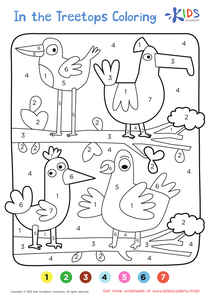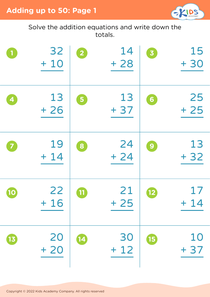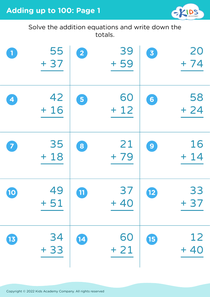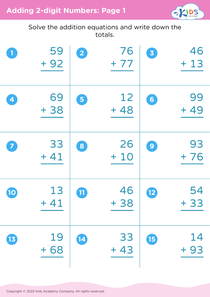Shape identification Grade 2 Adding up to 1000 Worksheets
6 filtered results
-
From - To
Discover our engaging "Shape Identification Grade 2 Adding Up to 1000 Worksheets," designed to enhance your child's understanding of shapes while practicing addition skills. Tailored for second-grade students, these worksheets combine fun and learning, helping young learners identify various shapes, such as circles, squares, and triangles, while also reinforcing their ability to add numbers up to 1000. Each activity promotes analytical thinking and creativity, making math enjoyable. Perfect for classroom use or at-home practice, our worksheets provide clear instructions and colorful visuals to captivate young minds. Help your child build a solid math foundation today!
Shape identification is a crucial skill in Grade 2 as it lays the foundation for geometric understanding and visual-spatial reasoning. At this stage, children learn to recognize, classify, and describe various shapes, which enhances their ability to see connections in math and the world around them. Understanding shapes is not only essential for geometry but is also interlinked with other areas of mathematics, such as addition and measurement.
When children engage in activities involving shape identification, they practice critical thinking and problem-solving skills by analyzing properties and relationships between shapes. This builds a strong mathematical foundation, facilitating their ability to tackle more complex concepts in the future.
Furthermore, shape identification contributes to cognitive development by fostering observation skills and creativity. Teachers and parents who emphasize this skill can help children develop confidence in their abilities to visualize and manipulate objects, which is vital for everyday tasks and advanced learning later on.
Ultimately, supporting shape identification in Grade 2 seamlessly connects with subsequent math skills, including adding up to higher numbers like 1000, as students learn to visualize and organize their thinking—skills essential for success in more sophisticated mathematical concepts. It’s an investment in their longer academic journey.

